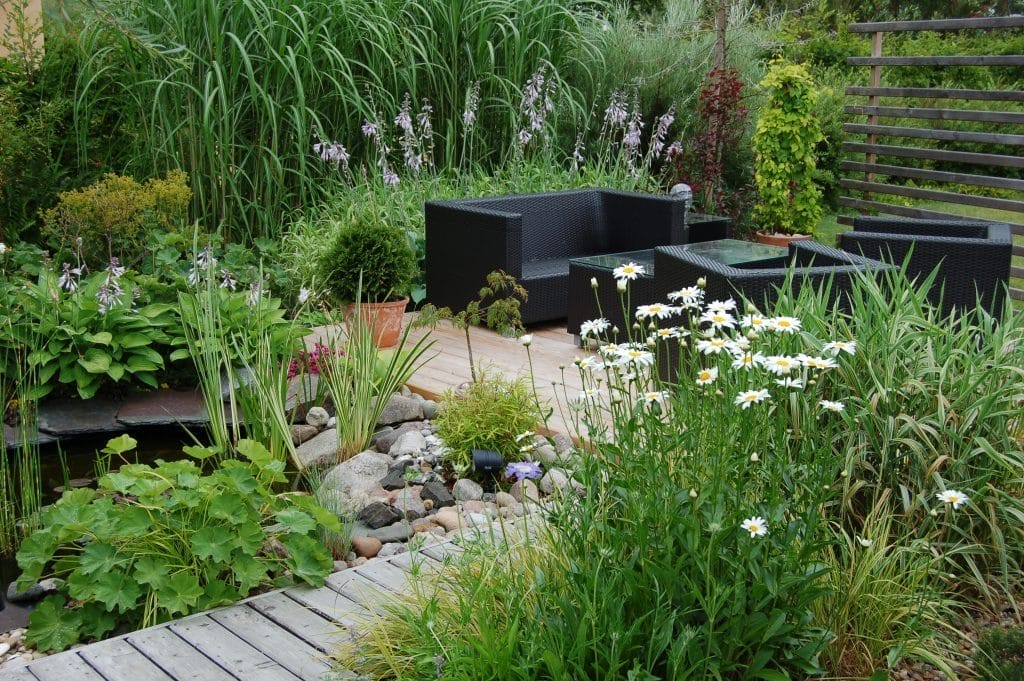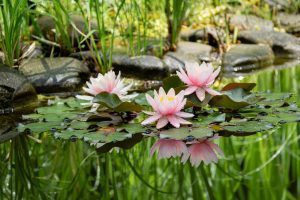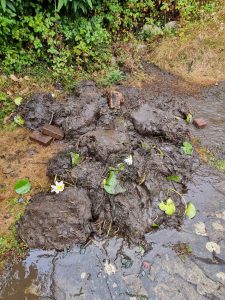
What are Marginal Pond Plants? Understanding Their Role and Benefits in Aquatic Ecosystems
Marginal pond plants are essential components of a pond ecosystem.
These plants thrive in the shallow waters at the edges of ponds, helping to stabilise the soil and provide a habitat for wildlife.
They play a significant role in maintaining water quality and preventing erosion while adding beauty and diversity to the landscape.

Incorporating marginal plants into a pond can greatly enhance both its aesthetic appeal and ecological value.
Various species offer unique benefits, from combating algae growth to supporting a diverse range of pond inhabitants.
Understanding the importance of these plants can motivate pond owners to create a more healthy and vibrant aquatic environment.
Key Takeaways
- Marginal pond plants contribute to a balanced pond ecosystem.
- They provide habitat and protection for aquatic wildlife.
- Choosing the right varieties enhances the pond’s beauty and function.
What Are Marginal Pond Plants?
Marginal pond plants are key elements of a pond ecosystem.
They thrive at the edges and contribute to the health and beauty of the area.
Understanding their characteristics helps in appreciating their role in aquatic ecosystems.
Characteristics of Marginal Plants
Marginal plants grow in shallow waters, usually around the edges of ponds.
They prefer wet soil and can often survive in waterlogged conditions.
These plants have roots submerged in water, while their leaves and flowers extend above the surface.
Many types of marginal plants, such as reeds and sedges, help stabilise the pond banks.
They prevent soil erosion and provide essential habitats for wildlife.
Some marginal plants also improve water quality by filtering nutrients and reducing algae growth.
In addition, they create a lush border that enhances the visual appeal of a pond.
Marginal plants play a crucial role in supporting fish and other aquatic life by providing shelter and shade.
These plants are vital for maintaining a balanced pond ecosystem.
Importance in the Pond Ecosystem
Marginal pond plants play a crucial role in maintaining a balanced pond ecosystem.
They contribute to natural filtration and provide essential habitats for various wildlife.
Their presence helps control algae growth and supports diverse pond life.
Natural Filtration
Marginal pond plants act as natural filters, improving water quality in ponds.
Their roots absorb nutrients and pollutants, which helps reduce excess nitrates and phosphates.
This process limits algae growth, preventing harmful blooms that can disrupt the ecosystem.
These plants also aid in stabilising the soil at the pond’s edge.
This decreases sediment erosion and allows for clearer water.
Fine roots capture debris and unwanted substances, enhancing the overall health of the water.
Additionally, oxygenating plants, which often include marginal species, increase oxygen levels in the water.
This is vital for supporting aquatic life and maintaining a well-functioning ecosystem.
Habitat for Wildlife
Marginal pond plants provide essential habitats for various species in a wildlife pond.
They offer shelter and nesting sites for birds, amphibians, and insects. This creates a safe environment, enabling animals to thrive.
Many creatures rely on these plants for food.
Insects and larvae feed on the foliage, while fish find refuge among the roots.
This food web supports the entire pond life.
Furthermore, these plants attract beneficial pollinators, such as bees and butterflies.
This enhances the biology around the pond, promoting a rich and diverse ecosystem.
The presence of marginal plants is key to maintaining the biodiversity of ponds.
Popular Varieties of Marginal Plants

Marginal pond plants come in various types that are attractive and functional.
Flowering varieties add colour, while foliage varieties contribute texture and structure to the pond’s edge.
Flowering Varieties
Flowering marginal plants are essential for adding vibrant hues to ponds.
One popular choice is the Water Iris. It features stunning blooms that come in various colours, including blue, yellow, and white.
These plants thrive in shallow water and provide good cover for wildlife.
Another notable flowering plant is the Marsh Marigold (Caltha palustris). This early spring bloomer produces bright yellow flowers. It prefers moist soil and can help prevent erosion along waterways.
The Yellow Flag Iris (Iris pseudacorus) is also a striking addition.
Its tall, elegant flowers bloom from late spring to early summer, providing a beautiful contrast against green foliage.
These flowering plants not only enhance visual appeal but also improve biodiversity in aquatic environments.
Foliage Varieties
Foliage varieties are just as important as flowers in creating a balanced pond ecosystem.
Reeds are excellent choices, offering both vertical interest and habitat.
Species like Common Reed (Phragmites australis) can grow tall and dense, creating separation between water and land.
Another useful foliage plant is Soft Rush (Juncus effusus). This plant has thick, upright stems and grows well in wet soil or shallow water. It is resilient and attracts various wildlife.
In addition, Bald Cypress (Taxodium distichum) provides unique, feathery foliage that can bring charm to the pond edge.
Planting Requirements and Depth

Successful planting of marginal pond plants relies on selecting the correct depth and suitable containers.
Both factors play a vital role in ensuring that these plants thrive in their aquatic environment.
Selecting the Right Depth
When choosing a planting depth, it’s essential to consider the specific needs of each plant.
Most marginal pond plants prefer a depth between 3-15 cm (1-6 inches) above the soil. This positioning allows their roots to stay wet while enabling the stems and leaves to extend above the water.
The following table outlines common planting depths for different types of marginal plants:
| Plant Type | Recommended Depth |
|---|---|
| Shallow Marginals | 0-15 cm (0-6 in) |
| Deep Marginals | 15-40 cm (6-16 in) |
Selecting the ideal depth prevents the plants from being submerged too deeply or sitting too high above the water, which can lead to poor growth.
Choosing Planting Containers
Aquatic baskets are an excellent choice for marginal pond plants. These containers allow for proper drainage while keeping soil in place.
Using baskets with an appropriate height is crucial. If a basket is too tall for the water level, it may stick out unattractively.
Aquatic soil is also necessary for fostering healthy growth.
This type of soil is designed to retain moisture and provide essential nutrients.
When planting, it is advisable to use soil specifically made for ponds to ensure particles do not cloud the water.
Keeping soil properly contained within aquatic baskets helps maintain a clean and healthy pond environment.
Maintenance and Care

Proper maintenance and care of marginal pond plants ensure they thrive and contribute effectively to the pond ecosystem.
This section covers essential practices like pruning and managing lighting conditions.
Pruning and Seasonal Care
Pruning is vital for the health of marginal pond plants.
Dead or yellowing leaves should be removed regularly to prevent disease and encourage new growth.
During the active growing season, late spring to summer, it is beneficial to trim back plants that become too dense, ensuring they have space to breathe.
In autumn, as temperatures drop, plants may start to die back.
Cutting back most foliage can help protect the roots from frost.
It is important to leave some stems as they can provide habitat for aquatic wildlife.
Wet soil is optimal, but if any plants are situated in waterlogged areas, monitor the moisture levels to avoid root rot.
Managing Lighting Conditions
Lighting is crucial for the overall health of marginal pond plants.
They generally thrive in full sun to partial shade.
Most species prefer at least 6 hours of sunlight each day. However, some varieties can tolerate shaded areas well.
It’s essential to watch for excessive sunlight, which can lead to algal blooms.
Using floating plants can help diminish the intensity of sunlight reaching the water’s surface.
In shaded spots, plants may grow more slowly, so ensure they still receive some light.
Adjustments may be needed to maintain a balanced environment, especially in areas prone to waterlogged soil.
Combating Algae with Marginal Plants
Marginal plants play a vital role in controlling algae growth in ponds.
By strategically planting these aquatic species, pond owners can create a balanced ecosystem that discourages algae proliferation while enhancing the pond’s overall health.
Strategic Planting for Algae Control
When choosing marginal plants, it is essential to focus on species that absorb nutrients efficiently.
Plants like Typha (reeds) and Veronica Beccabunga are particularly effective. They remove excess nutrients that feed algae, thereby starving it of its food source.
Planting a mix of these species around the pond edges provides shade, limiting sunlight penetration. This reduces the conditions that allow algae to thrive.
Water lilies and other floating plants can further block sunlight, creating a habitat that promotes healthy aquatic life.
Companion Plants for Marginals
Marginal pond plants can thrive alongside specific companion plants that enhance both aesthetics and ecology.
Choosing the right plants can improve water quality and provide a balanced environment.
Two important categories to consider are oxygenators and floral combinations.
Cohabiting with Oxygenators
Oxygenator plants are crucial for any pond ecosystem. They help maintain water clarity and quality by producing oxygen during photosynthesis.
For example, Elodea and Hornwort are popular choices.
These plants can be placed deeper in the pond, while marginals thrive in the shallower edges.
The combination creates a natural habitat for fish and wildlife.
Floating plants, such as Water Hyacinth, also work well with marginal plants. They provide shade and reduce algae growth by blocking sunlight.
By carefully selecting oxygenators that cohabit well with marginals, one can enhance both beauty and function in the pond.
Floral and Foliage Combinations
Creating a visually pleasing pond involves pairing marginal plants with flowering and foliage plants.
Water Lilies are a vibrant option, offering stunning blooms. They also provide shade, which benefits both fish and other pond plants.
Selecting bog plants, such as Sedges or Cattails, can add height and texture. These plants do well in wet soil and complement marginals growing around the edges.
Arranging plants with different heights and colours ensures an attractive landscape.
Consider the foliage shape and colour to create a harmonious look.
This strategy not only enhances the pond but also supports a healthier ecosystem.
Creating the Perfect Habitat for Pond Wildlife
Creating an ideal habitat for pond wildlife involves careful planning of the plants and features in and around the pond. This not only supports aquatic life but also encourages beneficial insects that play a key role in the ecosystem.
Supporting Aquatic Fauna
To support aquatic fauna effectively, it is crucial to have a mix of plant types.
Marginal plants grow at the water’s edge and provide shelter and breeding spots for different species.
These plants thrive in shallow water and can include species like water lily or bullrush.
Submerged plants such as hornwort and elodea are important as they release oxygen into the water and provide habitat for fish and aquatic invertebrates.
Creating varying depths within the pond is also beneficial. This allows for diverse habitats, supporting species from frogs to dragonflies.
Furthermore, installing rocky areas or logs can give fish places to hide and rest, enhancing the ecosystem’s health.
Attracting Beneficial Insects
To attract beneficial insects, pond planners should include a variety of flowering marginal plants like marsh marigold and meadow sweet.
These plants provide nectar and shelter, making the habitat appealing.
Shallow edges are critical for insects to access the water easily. They allow insects such as dragonflies and damselflies to reproduce.
Including grassy areas near the pond provides additional hunting grounds for these beneficial species.
Creating diverse habitats with different plant heights and structures will increase insect diversity.
Small features such as logs or stumps around the pond can serve as resting spots for pollinators.
This combination fosters a vibrant ecosystem that benefits both the pond and the surrounding wildlife.
Design and Aesthetics in Water Gardening
Creating a visually appealing water garden involves careful selection of plants, especially marginal plants. These plants not only enhance the beauty of the pond but also play an essential role in the ecosystem.
Visual Appeal with Marginal Plants
Marginal plants grow in shallow waters or along the pond’s edge, making them a vital element in water gardening.
Plants such as Creeping Jenny add vibrant colours with their bright yellow foliage. This plant thrives in wet conditions and can soften the transition from water to land.
Other popular marginal plants include the Yellow Flag Iris, known for its striking blooms in spring.
These plants can create texture and colour throughout different seasons, enhancing the overall look of the garden.
Arranging plants in clusters can also draw attention to specific areas, creating focal points within the garden.
The variety of heights and textures makes the garden visually interesting and dynamic.
Thematic Pond Designs
Using marginal plants allows for themed pond designs that complement the surrounding landscape.
For a naturalistic design, one might incorporate native species that promote local wildlife. This approach fosters biodiversity and enhances the ecological function of the pond.
On the other hand, a formal design emphasises symmetry and structure.
In this case, plants like reeds or hostas can be used to create clean lines along the pond’s edge.
Marginal plants can also be combined with elements like rocks and pathways to guide visitors through the space.
In both themes, the selection of colours and textures should create harmony with the overall garden.
Water gardens can be both beautiful and functional, providing a peaceful habitat for aquatic life.
Best Practices for Planting Marginals
Planting marginal plants requires careful techniques and the right materials to ensure healthy growth.
By following a few best practices, gardeners can create a vibrant pond edge that enhances the aquatic ecosystem.
Planting Techniques
When planting marginals, it is essential to choose the right location.
Select shallow areas along the pond’s edge, ideally where the water depth is no more than 30 cm. This ensures the plants receive adequate moisture without being fully submerged.
Using a planting basket is recommended.
Baskets keep the soil contained and allow roots to grow, while preventing excessive spreading.
To plant, fill the basket with aquatic compost, leaving about 2-3 cm of space at the top.
Position the plant with its roots spread out.
Cover the roots with more compost and add a layer of aquatic gravel on top to help secure the plant and reduce soil disturbance.
Using the Right Substrate
Choosing the right substrate is crucial for the health of marginal plants.
Aquatic compost offers nutrients and holds moisture effectively. It is specially formulated for plants that thrive in wet conditions.
A layer of aquatic gravel placed on top provides stability and helps prevent the compost from washing away.
When planting, avoid using garden soil, as it can contain chemicals that harm aquatic life.
Additionally, always check the planting depth specified for each plant type, as this can vary and affect growth.
Selecting Marginals for Different Climates
Choosing the right marginal pond plants for a specific climate is crucial. Different plants thrive in varying conditions, including temperature and sunlight. Understanding the distinctions between warm and cool climate varieties helps gardeners make suitable selections.
Warm vs. Cool Climate Varieties
In warm climates, plants such as Yellow Flag Iris and Lobelia adapt well to the heat and often require full sunlight.
These species thrive in temperatures above 20°C and can withstand occasional dry spells. They add colour and attract wildlife, making them popular choices for vibrant ponds.
Cool climate varieties, on the other hand, include Dwarf Cattails and Sweet Flag.
These plants are cold-hardy and can tolerate lower temperatures, usually below 10°C. They flourish in partial shade, which helps protect them from extreme weather.
Proper selection based on climate ensures healthy growth and a beautiful pond environment.



